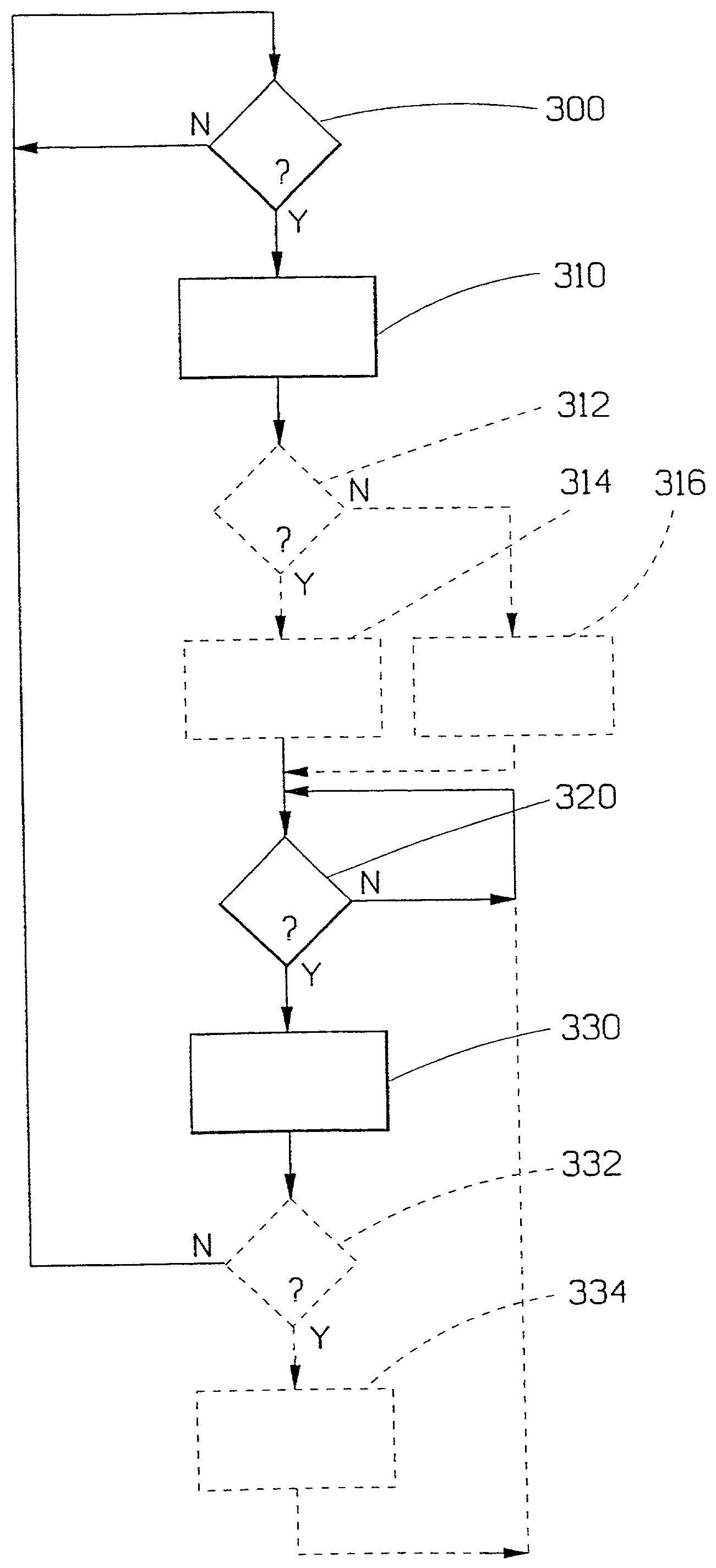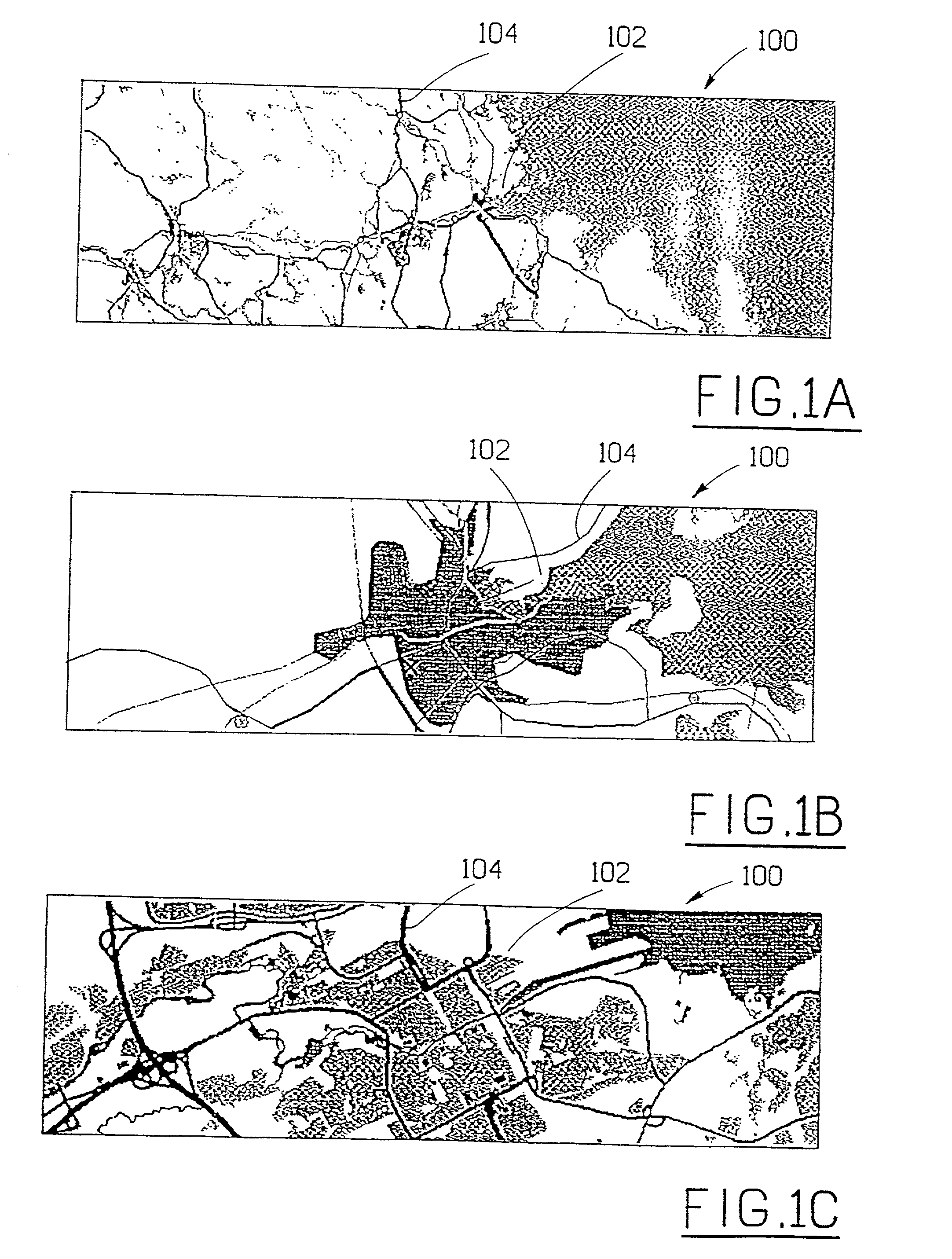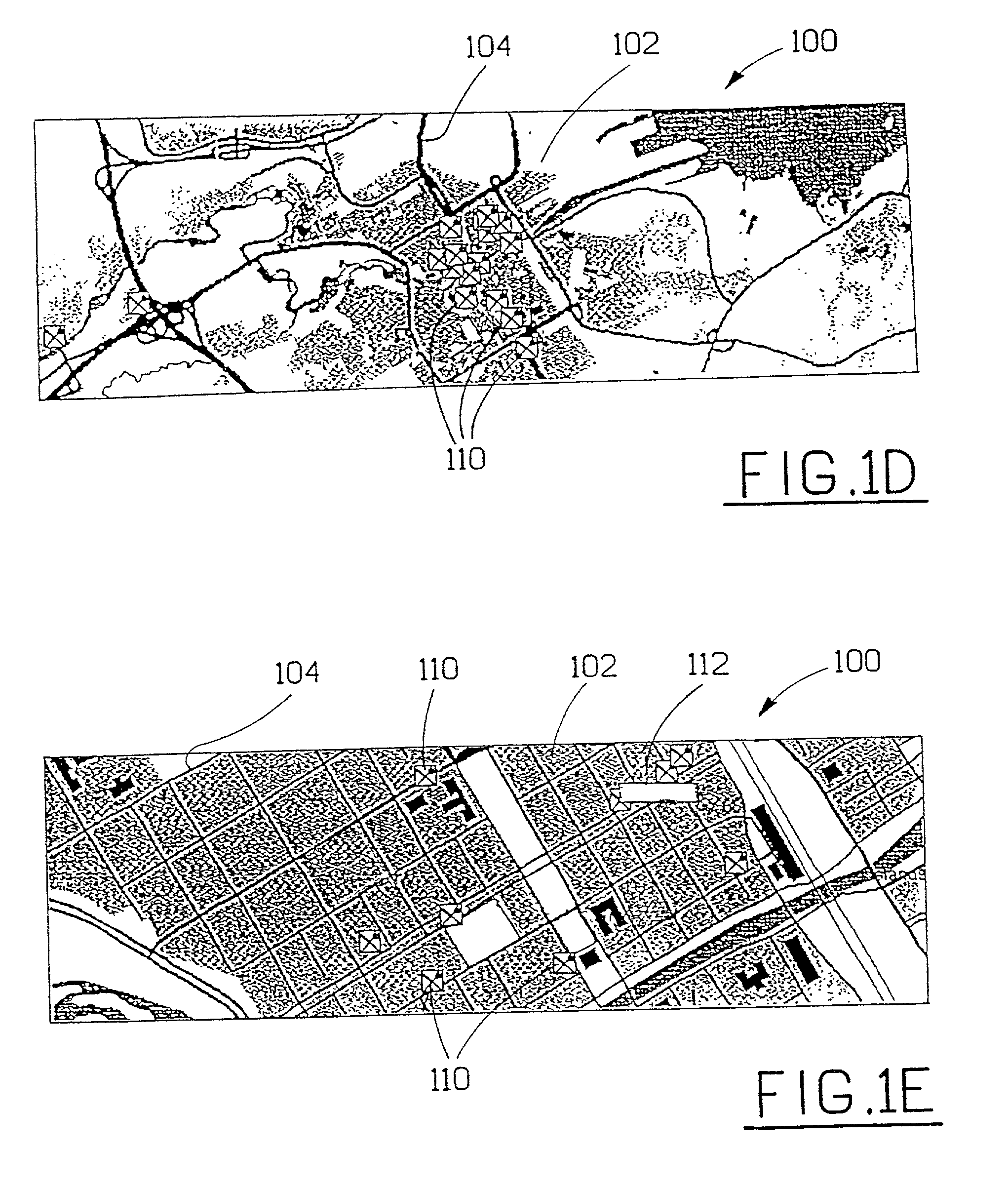Method for transferring information
a technology of information transfer and information transfer, applied in the field of map display systems, can solve the problems of limited transfer capacity of the transfer system, inability to disclose or suggest a scheme, and relatively small cases
- Summary
- Abstract
- Description
- Claims
- Application Information
AI Technical Summary
Benefits of technology
Problems solved by technology
Method used
Image
Examples
Embodiment Construction
[0031] The invention concerns problems associated with information transfer, specifically the transfer of additional / supplemental information to map displaying systems. It is a desire of users of map displaying systems to have access to a continuously updated database. However, it could be considered to be unpractical to be continuously connected to a central database containing all the maps and additional information that one could possibly want to access. One method of providing users / information consumers with easy access to desired maps and still be mobile or portable, i.e. not hooked up to a central database, is to provide each user with his or her own database comprising all the necessary information. However, it could be considered to be a disadvantage that the local database is fixed and that it is difficult to up-date the database by a new database. Users would not have access to volatile information such as road accidents, road construction work, hotel occupancy, meal of t...
PUM
 Login to View More
Login to View More Abstract
Description
Claims
Application Information
 Login to View More
Login to View More - R&D
- Intellectual Property
- Life Sciences
- Materials
- Tech Scout
- Unparalleled Data Quality
- Higher Quality Content
- 60% Fewer Hallucinations
Browse by: Latest US Patents, China's latest patents, Technical Efficacy Thesaurus, Application Domain, Technology Topic, Popular Technical Reports.
© 2025 PatSnap. All rights reserved.Legal|Privacy policy|Modern Slavery Act Transparency Statement|Sitemap|About US| Contact US: help@patsnap.com



